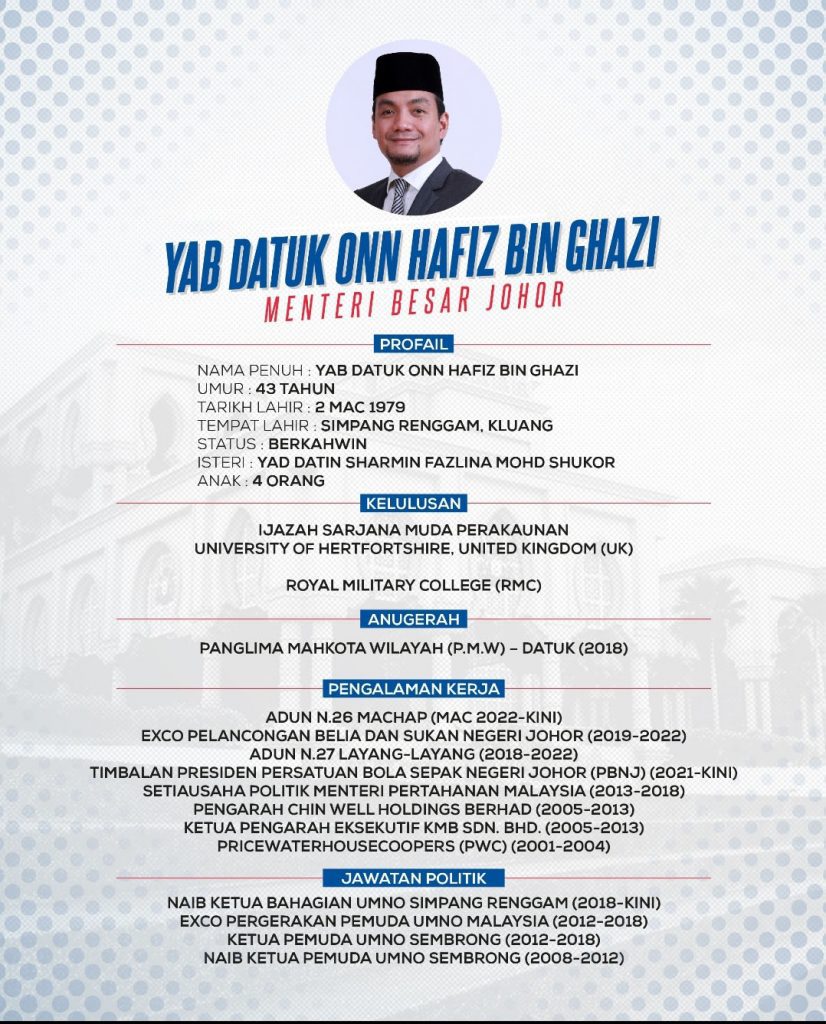Thomas Daniel was quoted in South China Morning Post, 1 June 2024
- From the South China Sea to Huawei and historical insurgencies, Malaysia has long been willing to overlook issues in the service of neutrality
- But its deep economic ties with China are now fuelling concerns that the Southeast Asian nation may find itself caught between sparring superpowers
Malaysia expects to welcome Chinese Premier Li Qiang this month for a visit marking 50 years since Kuala Lumpur first forged diplomatic ties with Beijing. But the celebratory mood may be tempered by the increasingly awkward questions experts say the US-China trade war is asking of Malaysia’s leadership.
China has now been Malaysia’s top trading partner for the past 15 years in a row – a reminder of the Asian giant’s dramatic economic ascent since the two countries established formal relations on May 31, 1974.
But these deep economic ties have also fuelled concerns that Malaysia may find itself caught in the middle of the intensifying rivalry between the United States and China, as sanctions ripple through global supply chains traversing Southeast Asia and the region’s leaders increasingly come under pressure to pick sides.
Amid the diplomatic peril, Malaysian Prime Minister Anwar Ibrahim sees opportunity. At an industry event in Kuala Lumpur on Tuesday, he made a pitch to global semiconductor players that Malaysia was their best bet for a “neutral and non-aligned location” to do business.
Yet experts caution that neutrality may prove elusive in the months ahead, especially if the bitter sparring between Washington and Beijing over tech and trade issues intensifies.
US and European Union envoys wrote to Malaysia’s government last year warning of national security risks if Chinese tech giant Huawei Technologies were allowed to bid for a role in the Southeast Asian nation’s 5G telecommunications infrastructure.
Malaysia was left in an uncomfortable bind.
“Being pressured by one major trading partner on economic [cooperation] against another is a major concern for Malaysian policymakers,” said Thomas Daniel, a senior foreign policy fellow with the Institute of Strategic and International Studies Malaysia.
“Given the geopolitical realities we face, however, it is a prospect we must plan for. It will require no small amount of grounded planning, deftness in diplomacy and fortitude to uphold our interest.”
As blocking Huawei would have indicated a shift away from Malaysia’s long-held foreign policy principle of neutrality, it instead said it would not rule the Chinese company out of the bidding process for a parallel 5G network to complement its existing infrastructure built by Swedish telecoms giant Ericsson.
Experts warn that snubbing Chinese firms to appease Western governments could carry dire trade consequences for Malaysia, given its deep economic ties with China. Malaysia’s trade with China totalled 450.8 billion ringgit (US$96 billion) last year – accounting for 17.1 per cent of the Southeast Asian nation’s total trade and nearly double its volume with the US, according to Malaysian government data.
China has also invested billions of dollars in Malaysian infrastructure, including high-profile projects under the Belt and Road Initiative such as the 50 billion ringgit (US$10.6 billion) East Coast Rail Link in Peninsular Malaysia that is slated to provide both freight and passenger services once it is up and running in 2027.
More than one-fifth of the country’s imports were shipped from China last year, ranging from electronics to machinery, chemicals and equipment.
These in turn feed Malaysia’s all-important manufacturing sector, which produces more than 85 per cent of the country’s exports.
But some analysts believe Malaysia can extract even more value from its relationship with China and its 1.4 billion-strong population.
“It’s a large economy, and a very open economy. Sure, China’s growth will be affected by [population] fragmentation, but it [the population] will continue to be an economic driver,” said Cassey Lee, coordinator of the regional economic studies programme at Singapore’s ISEAS-Yusof Ishak Institute.
While Malaysia’s economic performance took a hit from China’s near total shutdown during the pandemic and its slower-than-expected recovery, Lee said the sheer size of China’s domestic market and its political stability would provide long-term payoffs.
“There’s a bit of doom right now because you have business cycles that affect trade volume in both countries … but if you look forward another 50 years, China will continue to be an important trade partner to Malaysia,” he said.
Malaysia has already learned first-hand the risks of over-dependence on Chinese investment.
The near-empty US$100 billion Forest City project in southern Johor state facing Singapore has been a perennial embarrassment for successive Malaysian administrations since its 2016 launch.
It was billed as a flagship belt and road project, but has now become a largely uninhabited eyesore after developer Country Garden suffered a cash crunch on the back of capital controls imposed by China’s government, frightening off buyers.
“A slowdown in China might affect trade in [Southeast Asia], especially in the volume of the region’s exports to the country and the volume of strategic investments by China in the region,” said Collins Chong Yew Keat, an international-affairs analyst with the University of Malaya.
“There needs to be a strategic and careful calculation of the future of the economic transformation of the country and the region, taking into account the geopolitical and economic changes of both the US and China.”
Stalled China-linked construction projects also pepper the landscape of Kuala Lumpur, where hollow superstructures occupy prime locations around Malaysia’s capital with little indication of progress after the promised influx of Chinese consumers never materialised.
Despite the problems, Malaysia continues to pitch for more investments and economic engagement with China. In April last year, Prime Minister Anwar announced that China had committed nearly US$39 billion in fresh investment after his first official visit to Beijing since taking office.
Migration has followed. Malaysia ranks as the sixth most popular destination for Chinese expatriates, according to a survey by property technology firm Juwai IQI. More than 1.5 million Chinese tourists also visited last year, while in 2022 more than 22,000 Chinese students opted to pursue degrees in the country.
During his three-day visit scheduled for June 19-21, Chinese Premier Li is expected to meet with Malaysia’s top leaders, including an audience with the king and meetings with Anwar and the parliament speaker.
Pupil turns master
But ties between the two Asian nations were not always so cordial.
In the early years of the Cold War, pre-independence Malaysia – like many of its peers across Southeast Asia just starting to rebuild from World War II – grappled with a communist insurgency that received ideological, economic and military support from China’s Communist Party.
The conflict went on for decades, leaving a deep sense of distrust of China and of Malaysia’s ethnic Chinese community, even after the Malayan Communist Party formally surrendered in 1989.
But the insurgency did not stop Malaysia’s second prime minister, Abdul Razak Hussein, from visiting Beijing in 1974 and declaring the start of diplomatic relations alongside China’s then-premier Zhou Enlai.
“Despite the apparent reasons for refrain – our ideological chasm, our seemingly irreconcilable differences – our leaders dared to think beyond convention and took a bold leap of faith. This audacious move has blossomed into a rich and fruitful partnership,” Anwar said on Friday in a statement commemorating 50 years of diplomatic ties.
Malaysia-China ties took on greater substance during Mahathir Mohamad’s first tenure as prime minister, beginning in 1981. His influential “Look East” policy served as a platform to industrialise Malaysia by learning from East Asian economies such as Japan and Taiwan, while also establishing deeper ties with nations including mainland China.
It was during this time that Malaysia extended economic and technical assistance to China, helping get its economy and industries off the ground. A few decades on, the pendulum has decisively swung in the other direction.
“Today, we are asking Chinese entrepreneurs to invest in Malaysia, through various initiatives and programmes like the Belt and Road Initiative,” Senate Deputy President Nur Jazlan Mohamed told parliament on Thursday during a seminar to mark the 50th anniversary of Malaysia-China ties.
“In the past, they did not have skilled contractors. Just 30 years later, they can carry out mega projects in Malaysia and help us reinvigorate our economy.”
Mahathir, an expert in gauging the Malaysian public’s mood, rode a wave of anti-China sentiment to regain power in the 2018 national elections. On the campaign trail, he argued that then-leader Najib Razak – Mahathir’s former protégé and the son of Abdul Razak – had sold the country out to China, pointing to the troubled Forest City project as an example.
In his second stint in office, Mahathir swiftly cancelled a slew of China-funded infrastructure projects and ordered a review of the East Coast Rail Link.
Despite the domestic political aggravation, the ISEAS-Yusof Ishak Institute’s State of Southeast Asia 2024 report found that fewer than half of the Malaysians surveyed believed China’s economic rise to be worrying – a sharp decline from 61.7 per cent just a year earlier.
The study also found growing acceptance of China’s regional, political and strategic influence among Malaysian respondents at 43.8 per cent, nearly double the 27.3 per cent rate from 2023.
“This has been 50 years of walking hand in hand. High-level exchanges between the two countries have become increasingly frequent, building solid mutual trust and deep friendship,” China’s ambassador to Malaysia, Ouyang Yujing, said in an opinion piece run by national newswire Bernama on Friday.
Turning a blind eye?
Malaysia has other problems in its dealings with China, including a long-standing dispute over competing territorial claims in the South China Sea.
Although not as confrontational as the Philippines, Malaysia has complained in the past about Chinese coastguard ships making their presence felt in waters Kuala Lumpur argues fall within its exclusive economic zone.
It has issued diplomatic protest letters, the most recent of which was sent in 2021, and in 2016 unleashed a media blitz to draw attention to a fleet of 100 Chinese fishing trawlers discovered in Malaysia’s exclusive economic zone.
China’s foreign ministry said at the time that it was “fishing season” in the contested waterway.
Malaysia’s decision to dial down its public opposition to Beijing’s South China Sea actions in recent years has been widely seen as a pragmatic approach – more so as Anwar’s administration seeks to bolster the economy after years of atrophy.
“You cannot sharpen the pencil on both ends. So you can only maximise and shout about what you gain, and minimise and keep quiet on what you lose when dealing with a superpower,” said Oh Ei Sun, a senior fellow with the Singapore Institute of International Affairs.
Lee of the ISEAS-Yusof Ishak Institute agreed, saying that China’s aggressive moves in the South China Sea do not yet warrant a “black-and-white position” from Malaysia, which still needs the superpower’s trade and investments.
“They [Malaysian authorities] say they have detected some fishing trawlers, or there has been overflight by their [Chinese] planes … but those are not worth losing the billions in trade and investments from China.”
But Malaysia’s pragmatism may not last forever, especially if it intends to explore more of the rich oil and gas deposits in the parts of the South China Sea it claims sovereignty over.
The challenge, of course, is in whether Malaysia might have reached the limit of its current approach
Thomas Daniel, Institute of Strategic and International Studies Malaysia
The Southeast Asian nation has managed to extract most of what it considers important from the waterway so far, according to Thomas from the Institute of Strategic and International Studies, even if it had had to deal with “increased harassment” while making sure not to escalate the issue.
Instead, Malaysia has been a strong proponent of non-militarisation in the South China Sea, a position the fellow claimant states in the Association of Southeast Asian Nations have echoed as they seek to avoid a naval build-up by China, or the US and its Western allies.
“The challenge, of course, is in whether Malaysia might have reached the limit of its current approach,” Thomas said, adding that “this will largely be determined” by China as it “controls and decides on the facts on the ground”.
But Malaysia may have a few tricks left up its sleeve yet.
Even as successive leaders have emphasised the country’s close ties with China, Malaysia has remained steadfast in its neutral stance amid the ongoing diplomatic tensions between Washington and Beijing.
That neutrality will become increasingly important for Chinese enterprises – as well as any business with interests in the global tech and semiconductor supply chain – as Washington presses ahead with sanctions on China, accusing it of spying and developing technology that threatens US national security.
The global semiconductor industry is projected to be worth US$588 billion by next year, according to big-four accounting firm Deloitte, as silicon chips continue to drive the development of everything from electric vehicles and renewable energy to artificial intelligence and smartphones.
Malaysia already accounts for around 13 per cent of global demand in the semiconductor assembly, packaging and testing sector, according to government data. Its ability to balance the interests of the US and China could help it mitigate disruptions to global supply chains, making it an attractive destination for companies – and their affiliates – from both of the sparring superpowers.
“Malaysia’s ability to stay neutral could make it attractive as a key FDI definition for European and American companies, and even Chinese companies,” ISEAS-Yusof Ishak Institute’s Lee said.
This article first published in South China Morning Post, 1 June 2024





